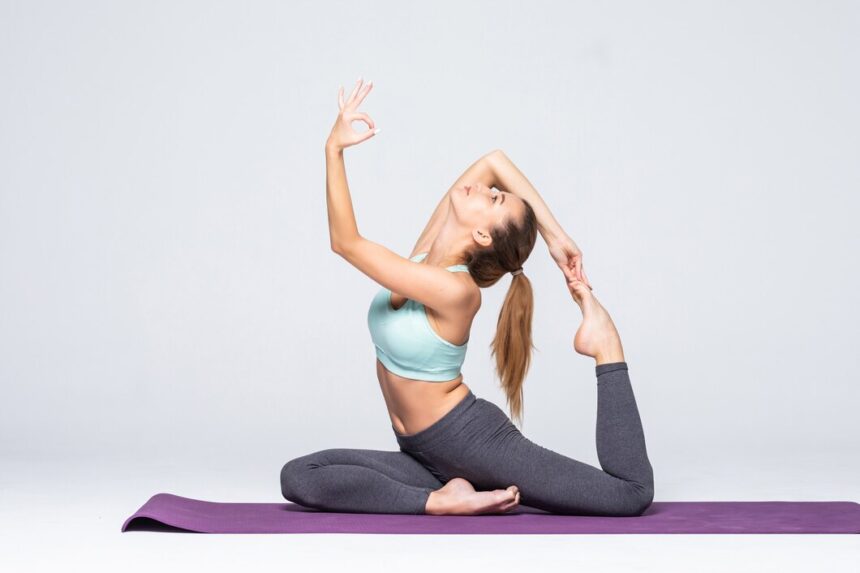In today’s fast-paced world, stress and anxiety have become common challenges for many people. While there are various treatments available, ranging from medication to therapy, an increasing number of individuals are turning to alternative and holistic approaches to manage anxiety. Among these approaches, yoga has emerged as a popular and effective natural remedy for alleviating symptoms of anxiety. In this article, we’ll explore the relationship between yoga and anxiety, examining how yoga practices can provide relief and enhance overall well-being.
Understanding Anxiety
Anxiety is a natural response to stress, characterized by feelings of apprehension, worry, and tension. While occasional anxiety is normal and can even be beneficial in certain situations, such as preparing for a presentation or exam, persistent or excessive anxiety can have a detrimental impact on mental and physical health. Chronic anxiety can manifest in various forms, including generalized anxiety disorder (GAD), panic disorder, social anxiety disorder, and phobias, among others.
The Role of Yoga in Anxiety Management
Yoga is an ancient practice that originated in India thousands of years ago, encompassing physical postures, breathing exercises, meditation, and mindfulness techniques. The holistic nature of yoga addresses the interconnectedness of the body, mind, and spirit, offering a comprehensive approach to promoting health and well-being. While yoga has numerous benefits for physical fitness and flexibility, its effects on mental health, particularly in reducing stress and anxiety, have been widely recognized and studied.
How Yoga Works to Reduce Anxiety
Yoga offers a variety of mechanisms through which it can help reduce anxiety and promote relaxation:
- Mindfulness and Meditation: Yoga encourages mindfulness, or the practice of being present in the moment without judgment. Mindfulness meditation techniques, such as focusing on the breath or observing sensations in the body, can help calm the mind and reduce anxious thoughts.
- Breathing Exercises (Pranayama): Pranayama techniques, which involve conscious control of the breath, have a profound impact on the nervous system. Deep breathing exercises, such as diaphragmatic breathing or alternate nostril breathing, can activate the body’s relaxation response, counteracting the physiological effects of stress and anxiety.
- Physical Postures (Asanas): Yoga postures, or asanas, promote physical strength, flexibility, and balance while also releasing tension and stress held in the body. Certain poses, such as forward bends, gentle twists, and restorative poses, can have a calming effect on the nervous system, helping to reduce anxiety and promote relaxation.
- Body Awareness and Sensation: Yoga encourages practitioners to cultivate awareness of the body and its sensations. By tuning into bodily sensations and observing areas of tension or discomfort, individuals can develop a greater sense of self-awareness and learn to release physical and emotional tension stored in the body.
- Stress Reduction and Relaxation: Regular practice of yoga can lower levels of stress hormones, such as cortisol, and promote relaxation through the activation of the parasympathetic nervous system. This shift from the “fight or flight” response to the “rest and digest” state can help counteract the physiological effects of chronic stress and anxiety.
Scientific Evidence Supporting Yoga for Anxiety
A growing body of research supports the effectiveness of yoga as a complementary therapy for anxiety. Several studies have demonstrated that regular yoga practice can reduce symptoms of anxiety, improve mood, and enhance overall quality of life. Research has also shown that yoga can be beneficial for specific anxiety disorders, such as GAD, panic disorder, and post-traumatic stress disorder (PTSD).
Incorporating Yoga into Anxiety Management
If you’re interested in incorporating yoga into your anxiety management routine, here are some tips to get started:
- Start Slow: Begin with gentle yoga practices that focus on relaxation and breath awareness, such as restorative yoga, yin yoga, or gentle hatha yoga.
- Find a Qualified Instructor: Look for a certified yoga instructor with experience teaching students with anxiety or stress-related conditions. Consider attending a beginner-friendly class or seeking private instruction if you’re new to yoga.
- Listen to Your Body: Pay attention to how your body responds to different yoga poses and practices. Modify poses as needed to accommodate any physical limitations or discomfort.
- Practice Regularly: Consistency is key to reaping the benefits of yoga for anxiety. Aim to practice yoga regularly, even if it’s just for a few minutes each day. Establishing a consistent routine can help cultivate a sense of calm and resilience over time.
- Combine Yoga with Other Strategies: While yoga can be a valuable tool for anxiety management, it’s essential to adopt a holistic approach that addresses all aspects of health and well-being. Consider incorporating other self-care practices, such as mindfulness meditation, journaling, or relaxation techniques, into your routine.
Yoga offers a holistic and accessible approach to managing anxiety, providing a combination of physical, mental, and emotional benefits. By incorporating mindfulness, breath awareness, physical movement, and relaxation techniques, yoga can help reduce stress, promote relaxation, and enhance overall well-being. Whether practiced alone or as part of a comprehensive anxiety management plan, yoga has the potential to empower individuals to cultivate greater resilience, balance, and peace of mind in the face of life’s challenges. If you’re struggling with anxiety, consider exploring the transformative power of yoga and discover the profound benefits it can offer for your mental and emotional health.










